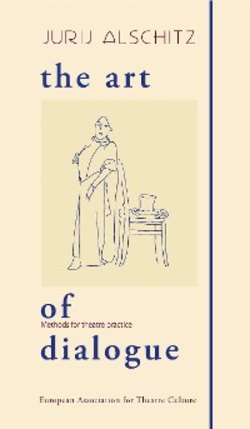Читать книгу The Art of Dialogue - Jurij Alschitz - Страница 6
ОглавлениеSecond question:
What type of dialogue is the playwright proposing?
For this, specific knowledge of the different types of dialogue are needed. You have found out about some of them already, and you will find out about others from this book and I hope it will help you a bit. But mainly, as I said above, try to find this out for yourself. Do not look for ready-made answers; ask yourself questions. How, and from what moment or word, does the playwright start the dialogue? How does the playwright develop it? What changes in the dialogue – where, when? Who holds the dialogue here, in this part, and now who, in this other part? What stages of development does the dialogue go through? What does the playwright lead the dialogue towards?
Still at first glance, even before going deeper into the play’s content, it’s clear when a great playwright is writing dialogue and when it’s a bad playwright. The bad one does it this way: question-answer, question-answer. The good playwright does it differently: question… then text about something completely different, then a reply but that’s already on another page. So, this is quality dialogue. But if the dialogue is built like steps, one after the other, then in this primitive composition, the dialogue will crawl like a snail. Then, all of the transitions, all of the answers to the questions, can be guessed beforehand. Then, there is no space, no space for playfulness, no space for ideas, no space for the theme. There will be no creativity and no revelations will take place. You will reach the end of the thought or the end of the text, comfortably, without hurrying, and that’s it – good night. Sleep well. No magic. The dialogue needs not only to walk but to run… well, and even to jump two or three steps at a time like a naughty schoolboy. It’s like in chess – you’ll never achieve anything with a combination of two or three moves, you need to sketch out a plan ten to twelve moves ahead. So if you come across a two or three-move dialogue, turn away from it, don’t waste your time working on it; it is, as a general rule, an imitation, not a dialogue.
In trying to ascertain how the playwright sees the dialogue, you need to take note that some dialogues are written to play the words, while other dialogues have been written to play the situation or so that the dialogue lives mainly in the pauses. Try to define this at the very start of your work. The point is that these are different types of dialogue and it’s only common sense that different rules apply to each of them.
Now, a few words about this, then later on in the chapter Dialogue of Words and Without Words, I’ll discuss it in more detail. In a dialogue of words, i. e. when words are the most important thing, this is the rule: the words must necessarily be translated into feelings, emotions, into physical life and then, every time, they will evoke a splash of emotion in the actor and prompt him with the next move and the direction of the game. In these kinds of dialogue, the actor doesn’t need to work things out logically (that won’t give him much), but rather to listen emotionally and see how it unfolds.
If a dialogue is built on pauses, then its basis is behaviour, physical action, and words are only the background (and there will be more about this later).
If a dialogue is built on game-playing, then you need to define or create the environment, the circumstances of the dialogue, the territory of its existence, the rules and principles of the game, the initial event of the scene and so on, and then after that suggest a composition, a movement of words, vectors of interaction and so on.
Once you’ve defined the playwright’s principles, take them into consideration in your work. But don’t rush into becoming its slave or observing it too dogmatically. Take note that in a good dialogue, the principles can change frequently. The frequent shift of rules is a sign of a living modern dialogue. And if the playwright doesn’t have these shifts, then be more bold and change them yourselves. Take note that each time, when changing the rules, the dialogue turns in all directions, and as a result shows different facets, and it naturally only benefits from this. Well, if, after all, you choose only one dramaturgical principle, only one type of dialogue, then pay close attention to where there are exceptions from the rule. Something isn’t right – and the alien elements will become spirits of your dialogue.
The definition of the type of dialogue thought up by the playwright needs to be done with full respect to the playwright and to his conception of dialogue. Respond creatively towards another person’s creativity, and artistically towards another artist. This is all that’s needed from you. A dialogue is always a co-creation – so begin this co-creation, working together with the playwright. Listen to him, and then freely and jointly begin searching together. This will help you to answer the third question.
